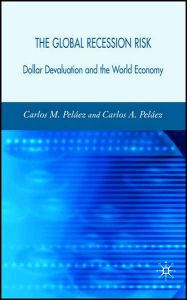Join getAbstract to access the summary!

Join getAbstract to access the summary!
Carlos M. Pelaez and Carlos A. Pelaez
The Global Recession Risk
Dollar Devaluation and the World Economy
Palgrave Macmillan, 2007
What's inside?
The U.S. must fix its dangerous, negative international debt structure, or face a recession with global repercussions.
Recommendation
This expert analysis, written before the 2008 economic crisis, presents a thorough discussion of ways to avoid a possible world recession. Authors Carlos M. Peláez and Carlos A. Peláez cite a staggering number of expert analysts and researchers in this scholarly economic study. Although many of the arguments they cover are extremely technical, most business leaders could benefit from the views presented by the authors and important economic heavyweights, including Alan Greenspan and Ben Bernanke. The book covers the U.S. current account deficit (CAD) in detail, and then discusses other market areas and concerns. It reports on the U.S.-China trade imbalance, explaining that the U.S. has not responded to strong consumer-goods imports from the China-Asiatic basin with equally strong exports to even out the balance of trade. They note that this situation has worsened and could throw America into a serious recession. The book issues a clear warning, told through statistics and studies, that the international debt structure must be corrected as a “shared responsibility” of all nations. Although events have surpassed some of the Peláezs’ forecasting, getAbstract recommends this ponderous but valuable X-ray of the world’s financial imbalances to readers who want a serious analysis.
Summary
About the Authors
Carlos M. Peláez, Ph.D., has published books, essays and articles worldwide. He was director of Banco Chase and the Rio de Janeiro Association of Banks, and vice president of Chase Manhattan Bank, USA. He is managing director of CMP Associates, USA. Carlos A. Peláez is the author of International Financial Architecture. He is an associate editor of the Journal of International Economic Law at the University of Pennsylvania Law School.
















Comment on this summary